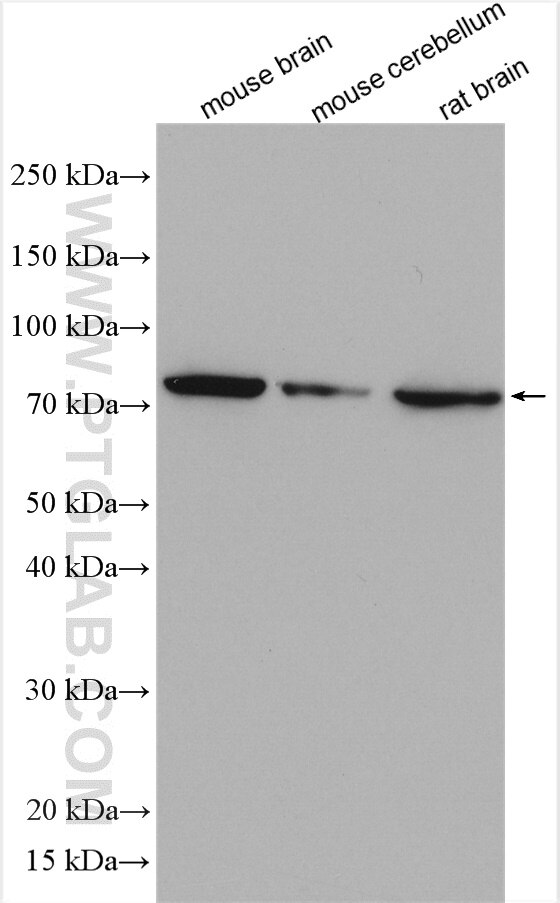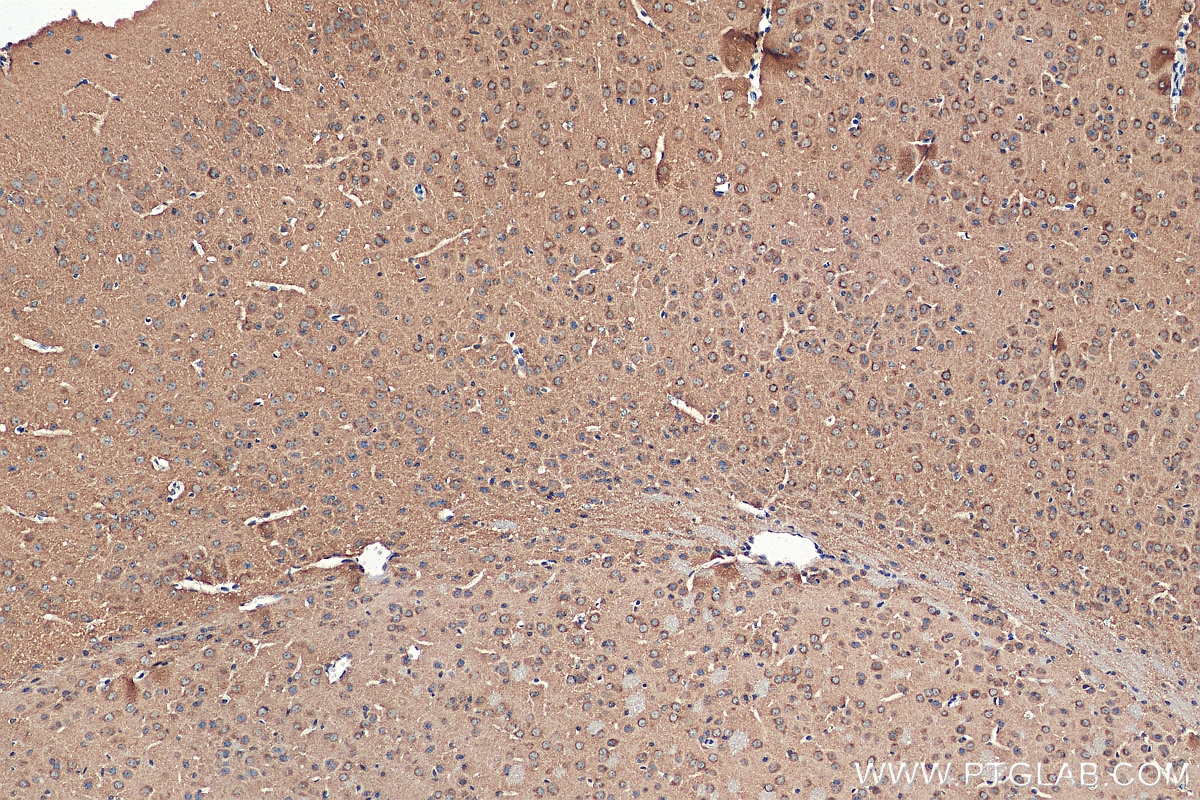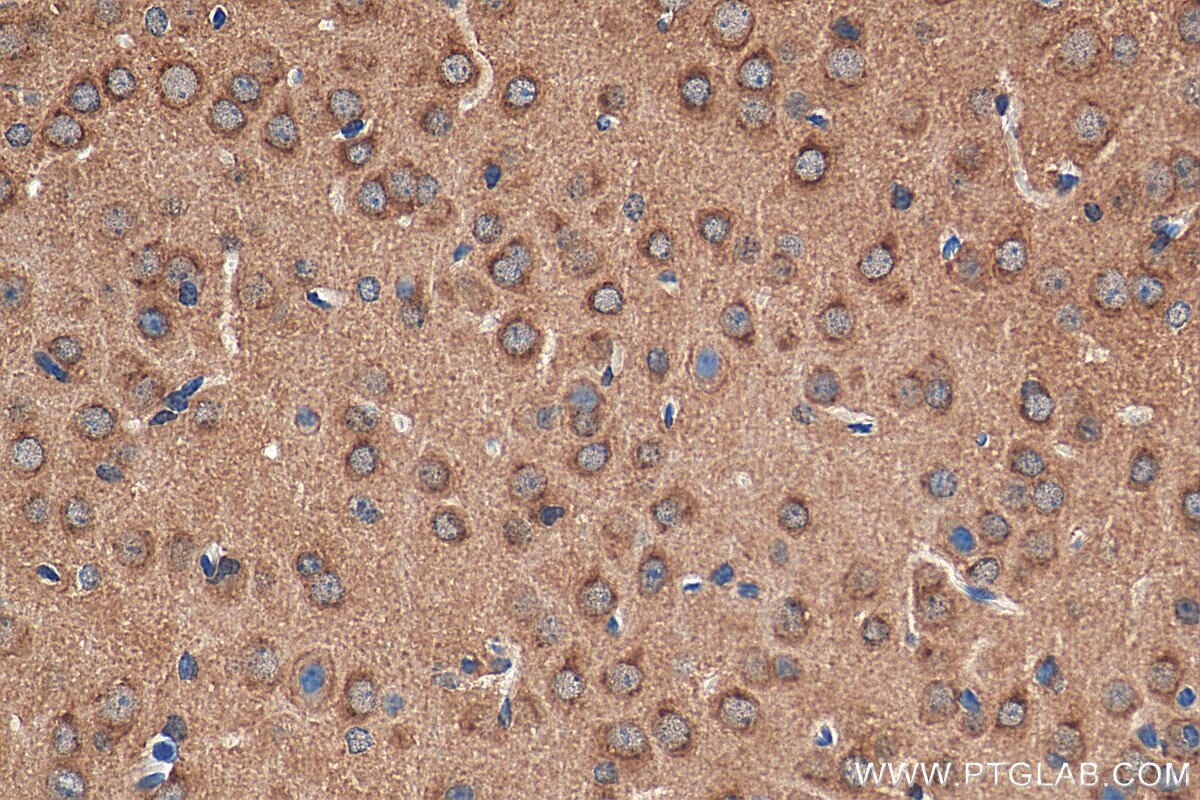Anticorps Polyclonal de lapin anti-NSF
NSF Polyclonal Antibody for WB, IHC, ELISA
Hôte / Isotype
Lapin / IgG
Réactivité testée
Humain, rat, souris
Applications
WB, IHC, ELISA
Conjugaison
Non conjugué
N° de cat : 28837-1-AP
Synonymes
Galerie de données de validation
Applications testées
| Résultats positifs en WB | tissu cérébral de souris, tissu cérébral de rat, tissu de cervelet de souris |
| Résultats positifs en IHC | tissu cérébral de souris, il est suggéré de démasquer l'antigène avec un tampon de TE buffer pH 9.0; (*) À défaut, 'le démasquage de l'antigène peut être 'effectué avec un tampon citrate pH 6,0. |
Dilution recommandée
| Application | Dilution |
|---|---|
| Western Blot (WB) | WB : 1:1000-1:6000 |
| Immunohistochimie (IHC) | IHC : 1:50-1:500 |
| It is recommended that this reagent should be titrated in each testing system to obtain optimal results. | |
| Sample-dependent, check data in validation data gallery | |
Informations sur le produit
28837-1-AP cible NSF dans les applications de WB, IHC, ELISA et montre une réactivité avec des échantillons Humain, rat, souris
| Réactivité | Humain, rat, souris |
| Hôte / Isotype | Lapin / IgG |
| Clonalité | Polyclonal |
| Type | Anticorps |
| Immunogène | NSF Protéine recombinante Ag30229 |
| Nom complet | N-ethylmaleimide-sensitive factor |
| Masse moléculaire calculée | 744 aa, 83 kDa |
| Poids moléculaire observé | 70-83 kDa |
| Numéro d’acquisition GenBank | BC030613 |
| Symbole du gène | NSF |
| Identification du gène (NCBI) | 4905 |
| Conjugaison | Non conjugué |
| Forme | Liquide |
| Méthode de purification | Purification par affinité contre l'antigène |
| Tampon de stockage | PBS with 0.02% sodium azide and 50% glycerol |
| Conditions de stockage | Stocker à -20°C. Stable pendant un an après l'expédition. L'aliquotage n'est pas nécessaire pour le stockage à -20oC Les 20ul contiennent 0,1% de BSA. |
Informations générales
The N-ethylmaleimide-sensitive fusion protein (NSF) is a 70-83 kDa cytosol protein that is expressed in all cell types. NSF functions as an ATPase and it is a part of the 20S membrane fusion apparatus with the vesicular SNAP receptor (v-SNARE) synaptobrevin, and the target SNAREs (t-SNARE) syntaxin and SNAP-25. With the hydrolysis of ATP by NSF, the released energy may set-up or drive membrane fusion processes. NSF is required for general membrane transport and trafficking.
Protocole
| Product Specific Protocols | |
|---|---|
| WB protocol for NSF antibody 28837-1-AP | Download protocol |
| IHC protocol for NSF antibody 28837-1-AP | Download protocol |
| Standard Protocols | |
|---|---|
| Click here to view our Standard Protocols |




